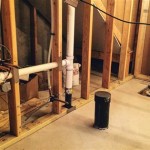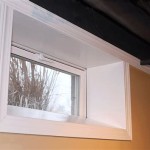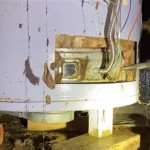How To Insulate Basement Walls Without Framing Diy
How To Insulate Basement Walls Without Framing? Insulating basement walls without building a frame is a common challenge for DIY enthusiasts. If you want to increase the comfort & energy efficiency of your basement, you have a few options to insulate the walls without framing. Here are four methods to insulate basement walls without framing.
1. Spray Foam Insulation
Spray foam insulation is an excellent option for insulating basement walls that are not providing enough space to install framing. This insulation is applied in liquid form and expands to form a thick, airtight seal that covers the entire surface of the wall. Spray foam insulation is effortless to install, as it can be applied directly to the wall without the need for any additional framing or support. It also provides excellent thermal resistance & soundproofing capabilities. However, spray foam insulation can be more expensive than other methods and requires professional installation.
2. Rigid Foam Insulation Boards
Rigid foam insulation boards are another effective way to insulate basement walls without framing. These boards are made of polystyrene or polyisocyanurate and are typically 1 to 4 inches thick. They are attached to the wall using adhesive or mechanical fasteners. Rigid foam insulation provides excellent thermal resistance and is easy to install, but it is not as effective at soundproofing as spray foam insulation. It also requires careful installation to ensure that all gaps and seams are sealed.
3. Batt Insulation
For a more economical option, batt insulation can be used to insulate basement walls without framing. Batt insulation is made of fiberglass or cellulose and is available in pre-cut rolls or batts that are fitted between the wall studs or joists. If you are not framing the wall, you can attach the batt insulation directly to the wall using adhesive or mechanical fasteners. Batt insulation is less expensive than spray foam or rigid foam insulation, but it provides less thermal resistance and soundproofing. It is also more susceptible to moisture damage than other types of insulation.
4. Reflective Insulation
Reflective insulation is a thin, reflective material that can be installed on basement walls without framing. This insulation consists of a layer of aluminum foil laminated to a layer of kraft paper or bubble wrap. Reflective insulation reflects heat back into the room, providing thermal insulation. It is also easy to install and can be attached to the wall using adhesive or mechanical fasteners. However, reflective insulation is not as effective at thermal insulation as spray foam or rigid foam insulation, and it does not provide soundproofing.

How To Finish A Basement Diy

How To Insulate Your Basement S Concrete Walls The Seattle Times
Does The Bottom Half Of Basement Wall Has To Be Insulated Diy Home Improvement Forum

Walk Out Basement Wall Insulation

Insulating And Framing A Basement
%20(T).jpg?strip=all)
How To Insulate Concrete Basement Walls

How To Insulate Existing Walls Comprehensive Guide

How To Frame A Basement Wall Youtube

Tips For Framing An Unfinished Basement Week 2 Of The One Room Challenge Willow Bloom Home

Insulating And Framing A Basement
See Also








